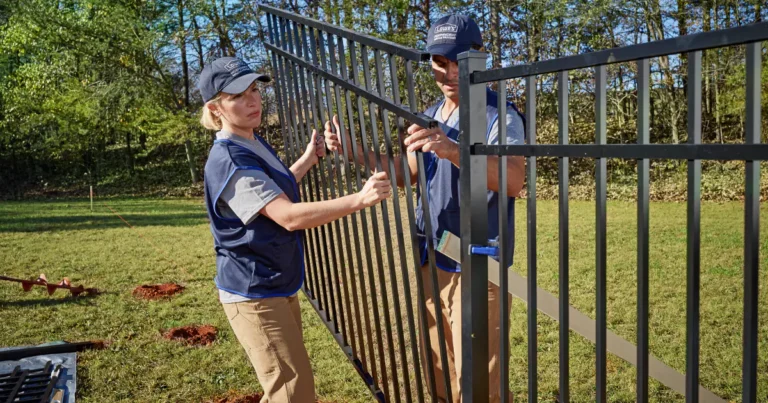7 Best Software Tools For Home Energy Auditors
Understanding which software tools are best for home energy auditing is essential for professionals aiming to deliver accurate and efficient assessments. This article will explore the top options available to energy auditors today.
The right software can make all the difference, enhancing precision and saving time during audits. Readers will learn about various software tools that stand out in the industry for their features and reliability.
1) FLIR E8-XT Thermal Camera
The FLIR E8-XT Thermal Camera is a powerful tool for home energy auditors. This device features a 76,000-pixel infrared detector. It helps in identifying electrical, mechanical, and building issues.
This thermal camera can operate in temperatures ranging from -20°C to 550°C. It is ideal for spotting energy inefficiencies and potential hazards like hidden moisture or air leaks.
The FLIR E8-XT connects to the FLIR Tools app. This app enables users to share images and findings quickly. This feature is useful for creating reports and documenting issues found during inspections.
With its 3.5-inch touchscreen display, the FLIR E8-XT allows easy navigation and detailed image analysis. The touchscreen makes it simple to add notes and annotations directly to images.
For those looking for hassle-free data transfer, the FLIR E8-XT offers a cloud storage option. This eliminates the need for physical data transfer methods like SD cards or USB cables, ensuring data is always accessible.
Users appreciate that the FLIR E8-XT provides clear and accurate thermal readings. It helps in making informed decisions about energy improvements in homes. This makes it a valuable tool for home energy audits.
The device is designed to be user-friendly, which is beneficial for both seasoned professionals and newcomers. The FLIR E8-XT is a solid choice for anyone needing reliable thermal imaging in their home energy auditing toolkit.
Read more about the FLIR E8-XT Thermal Camera.
2) Energy Audit Software by Retrotec
Retrotec offers energy audit software designed to help auditors perform thorough home energy assessments. This software integrates well with their testing hardware, making data collection and analysis efficient.
By providing detailed reports, auditors can identify areas where a home is losing energy. The software helps in suggesting measures to improve energy efficiency.
The user-friendly interface is simple to navigate, which makes it suitable for both experienced auditors and beginners. It also includes features for data visualization. This helps auditors and homeowners understand energy usage patterns better.
The software supports various types of testing equipment like blower doors and duct testers. This compatibility ensures accurate and reliable results.
Retrotec’s energy audit software also includes tools for generating energy efficiency recommendations. These suggestions can help homeowners make informed decisions about upgrades and improvements.
Furthermore, the software can store historical audit data. This feature allows for tracking changes in energy efficiency over time, providing valuable insights for long-term energy management.
In summary, Retrotec’s energy audit software is a robust tool that aids auditors in delivering comprehensive energy assessments.
3) Home Energy Saver by Lawrence Berkeley National Laboratory
Home Energy Saver, developed by Lawrence Berkeley National Laboratory, is a valuable tool for home energy auditors. It has been in use since 1996, helping homeowners save energy and money. Initially sponsored by the Energy Star program, it leverages state-of-the-art data and models.
This tool empowers users to recommend energy-saving upgrades suited to the home’s climate and local energy prices. This feature makes it a versatile option for different regions.
The tool provides detailed engineering documentation, which is helpful for auditors needing in-depth technical information. The development of Home Energy Saver began in 1994 and continues to evolve with modern advancements.
Recognized for excellence, the Home Energy Saver software received the Federal Laboratory Consortium Impact Award. This highlights its reliability and effectiveness in improving energy efficiency.
Home Energy Saver also supports the Federal energy mission by promoting national recognition of energy efficiency programs. It’s a key player in aiding auditors to present practical energy-saving suggestions.
For more details, visit the Home Energy Saver documentation.
4) FLUKE 361 Current Clamp Meter
The FLUKE 361 Current Clamp Meter is a versatile tool used by home energy auditors. It is known for its compact design, making it easy to handle in tight spaces. This clamp meter is ideal for measuring current in residential settings.
The FLUKE 361 provides accurate and reliable readings. Its jaw design allows for easy clamping around wires without interrupting the circuit. This feature is essential for safety and efficiency during home energy audits.
With the FLUKE 361, users can measure both alternating and direct current. This capability is helpful for checking various types of electrical systems. The meter’s simple interface makes it user-friendly, even for those new to energy auditing.
One of the key features of the FLUKE 361 is its durability. Built to withstand the demands of regular use, it ensures accurate performance over time. This durability makes it a valuable investment for home energy auditors.
The meter also includes safety features that meet industry standards, ensuring that users can operate it with confidence. These safety measures help prevent accidents and ensure reliable measurements.
For more information about this tool, you can visit FLUKE’s official site to explore its detailed specifications, usage, and compatibility.
5) Blower Door Test Systems by The Energy Conservatory
The Energy Conservatory provides advanced blower door test systems. These tools are essential for home energy auditors. They help find air leaks in buildings, which improves energy efficiency.
One key product is the TECTITE 4.0. This Windows-based software allows for automated blower door tests. It also has a built-in report generator and graphing capabilities.
The TEC software suite is available at no charge. It enhances testing and data collection. This encourages more thorough building assessments, raising the quality of built environments.
The Energy Conservatory’s blower door systems can put a house under positive or negative pressure. This measures the cubic feet per minute (CFM) rate of air exchange. Such testing is crucial for identifying energy losses and improving insulation.
The company’s approach focuses on practical applications. Their tools are designed for ease of use. They support both basic and advanced testing methods, meeting different needs in home energy auditing.
6) Infrared Thermal Imaging Cameras by Hti-Xintai
Infrared thermal imaging cameras by Hti-Xintai are popular among home energy auditors. These cameras help identify issues like poor insulation, leaks, and electrical faults. The HT19 model, for example, offers a resolution of 320 x 240 pixels and a 3.2-inch color display screen.
Hti-Xintai cameras come with video functions and analysis software, aiding thorough energy audits. The HT19 model is available in the United States with fast shipping times using USPS service. Users can ignore any unexpected shipping information at checkout for U.S. orders.
For professionals seeking higher resolution, Hti-Xintai offers models like the HT-A2, featuring up to 76,800 pixels infrared resolution. The HTI-19 model also boasts an improved 300,000 pixels and provides a sharp display screen.
With a comfortable grip and lightweight design, Hti-Xintai infrared cameras ensure ease of use during inspections. These attributes make them effective for identifying hidden issues in homes, such as poor insulation and potential fire hazards.
7) TREAT (Targeted Retrofit Energy Analysis Tool)
TREAT stands for Targeted Retrofit Energy Analysis Tool. It is a professional software used for home energy audits. This software is known for its comprehensive energy analysis and building modeling.
TREAT offers two versions: single and multifamily. This makes it versatile for different types of residential buildings. It helps energy auditors perform accurate and detailed assessments.
According to PSD Consulting, TREAT has won awards for its reliability and accuracy. It is a trusted tool in the energy audit industry. Many professionals rely on it for precise calculations.
The software allows users to model various retrofit scenarios. This helps in identifying the most cost-effective energy-saving measures. TREAT’s features are designed to support complex energy audit tasks efficiently.
The Energy Audit Tools guide lists TREAT as a handy set of tools. It highlights the software’s usefulness in making energy auditors’ tasks easier.
Importance Of Software Tools In Home Energy Auditing
Software tools play a crucial role in home energy audits by boosting efficiency and lowering costs. They enable auditors to provide accurate analyses and recommendations for homeowners.
Increasing Home Energy Efficiency
Software tools help identify areas where homes lose energy. Tools like energy modeling software and infrared thermography can detect leaks, insufficient insulation, and inefficient systems. This allows auditors to create a detailed energy profile of the home.
Once issues are identified, auditors can suggest specific upgrades, such as improved insulation, energy-efficient windows, and better heating or cooling systems. Homeowners can then follow these recommendations to make their homes more efficient.
Using software ensures that suggestions are backed by data, making them more reliable. This leads to significant energy savings and a more comfortable living environment.
Reducing Operational Costs
Using software tools reduces the time and effort needed for a home energy audit. Traditional methods require manual calculations and extensive physical inspections, which are time-consuming and prone to errors.
Advanced software can automate much of this process. For instance, a blower door test combined with software can quickly measure the home’s airtightness. This automation cuts down labor costs and speeds up the whole auditing process.
Moreover, software can store and organize data, making it easier for auditors to track their findings and recommendations. This can improve operational efficiency and reduce the overall cost of audits.
By relying on accurate and automated tools, auditors can offer their services at competitive prices while maintaining high-quality standards.
Features Of Effective Energy Auditing Software
Effective energy auditing software must excel in data analytics, seamlessly integrate with other systems, and offer a user-friendly interface. These features ensure that auditors can perform thorough and accurate assessments.
Data Analytics And Reporting
Advanced energy auditing software provides robust data analytics capabilities. This enables users to collect, analyze, and interpret energy use patterns. Detailed reporting features present findings in easy-to-understand formats such as charts and graphs. This allows auditors to identify problem areas quickly and propose actionable solutions.
Effective tools may include features like real-time data monitoring, which gives immediate insights into energy consumption. Additionally, these tools often offer customizable reports tailored to specific needs, ensuring that users get the most relevant information.
Integration With Other Systems
Seamless integration with other systems is crucial for energy auditing software. This includes compatibility with HVAC systems, lighting controls, and other building management systems. By integrating these, auditors can create a comprehensive view of the building’s energy performance.
Effective software will also support data exchange with external databases and public energy resources. This enhances the accuracy of audits by allowing auditors access to more extensive datasets. Software that integrates well with energy modeling tools further augments the auditor’s ability to simulate and predict energy-saving measures.
User-Friendly Interface
A user-friendly interface is essential for effective energy auditing software. It should be intuitive, allowing users to navigate the system without extensive training. Clear menus, straightforward navigation, and customizable dashboards contribute to a better user experience.
Tools should also include helpful prompts and guides to assist users in making the most of the software features. This reduces the learning curve and increases productivity. A responsive and accessible design ensures that the software can be used on various devices, from desktops to tablets and smartphones.
Impact Of Advanced Technology On Home Energy Audits
Advanced technology significantly boosts the efficiency and accuracy of home energy audits. This section explores how AI and machine learning enhance data analysis, and the benefits of real-time monitoring tools.
AI And Machine Learning
AI and machine learning are transforming home energy audits by automating complex tasks.
These tools can analyze large datasets quickly to identify patterns in energy consumption. This helps auditors pinpoint energy inefficiencies that might be missed by traditional methods.
Machine learning algorithms improve over time, making predictions about future energy use more accurate. AI-based tools can simulate various scenarios to suggest optimized energy-saving strategies for different types of homes.
Another benefit is the reduction of human error. Automated systems handle repetitive tasks, allowing auditors to focus on more complex analysis. Additionally, AI can integrate data from various sources such as smart meters and weather data, providing a comprehensive view of energy use.
Real-time Monitoring
Real-time monitoring tools provide instant feedback on energy consumption. Devices like smart plugs and sensors detect energy use in various home appliances and systems.
This immediate data helps auditors understand energy patterns more precisely. Homeowners can see where energy is wasted and take immediate action to improve efficiency.
Blower door tests and infrared cameras are common tools used in real-time monitoring. Blower door tests measure the airtightness of homes, identifying leaks that cause energy loss. Infrared cameras detect heat loss in walls and windows, showing visible proof of energy inefficiency.
Integrating real-time data with energy audit software offers a dynamic approach to optimizing energy use. This continuous feedback loop helps both auditors and homeowners make informed decisions to enhance energy savings.
Frequently Asked Questions
This section answers common questions about tools and software for home energy audits, focusing on the necessary equipment, software features, and preparation steps.
What tools are commonly used during a home energy audit?
Home energy audits often use a variety of tools to measure and analyze energy usage. Common tools include thermal cameras like the FLIR E8-XT Thermal Camera, blower door systems, and current clamp meters like the FLUKE 361 Current Clamp Meter.
How can software improve the efficiency of a home energy audit?
Software can streamline the data collection and analysis process, making audits faster and more accurate. Programs like Energy Audit Software by Retrotec can create detailed energy profiles by gathering data from online sources, reducing manual entry errors and saving auditors valuable time.
Are there any free or open-source energy auditing tools available for download?
Yes, tools like Home Energy Saver by Lawrence Berkeley National Laboratory offer free web-based solutions for performing energy audits. They provide valuable insights without the need for expensive software.
What features should one look for in home energy audit software?
Key features to seek in home energy audit software include ease of use, detailed reporting capabilities, and compatibility with other tools. Look for software that offers comprehensive data analysis and integrates smoothly with devices like thermal cameras and blower door systems.
Which equipment is essential for conducting a thorough energy audit?
Essential equipment for a thorough energy audit includes thermal imaging cameras, blower door systems, and current clamp meters. These tools help identify energy inefficiencies and areas for improvement by providing precise measurements and visual data.
What steps are involved in preparing for a home energy audit?
Preparing for a home energy audit involves several steps. First, gather all utility bills for the past year. Second, ensure that all areas of the home are accessible. Lastly, inform all household members about the audit and what to expect during the process. These steps help ensure a smooth and effective audit.






